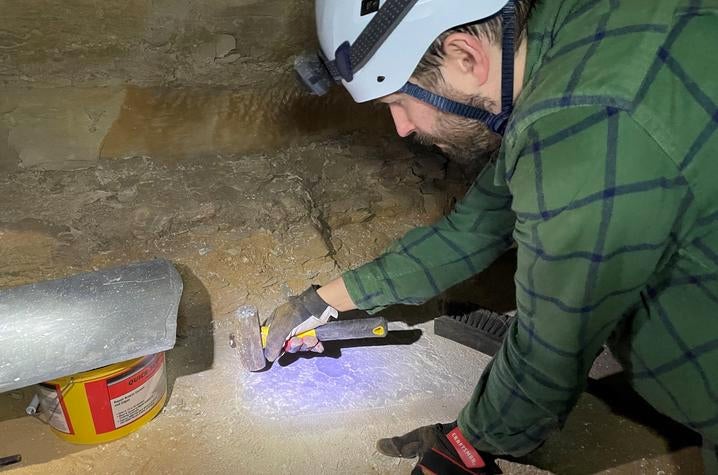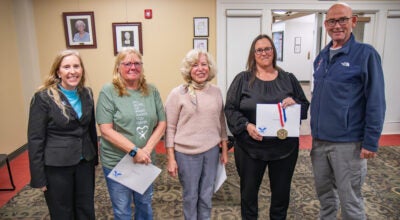Kentucky Geological Survey installs seismic station in Mammoth Cave
Published 2:00 pm Monday, March 13, 2023

- Jon Schmidt prepares an outcrop for the seismometer installation. UK photo by Seth Carpenter.
|
Getting your Trinity Audio player ready...
|
NEWS RELEASE
University of Kentucky
Last month, seismologists at Kentucky Geological Survey (KGS) and Mammoth Cave National Park staff installed a new seismic monitoring station within the cave system. KGS seismologist Seth Carpenter says this new station fills an earthquake monitoring gap in south-central Kentucky.
Kentucky is affected by several seismic zones — the New Madrid and Wabash Valley Seismic Zones to the west and the Eastern Tennessee Seismic Zone to the east — and occasional earthquakes that occur outside those zones.
After extensive research, KGS located an existing bedrock face in an infrequently visited passage in Mammoth Cave that was ideal for the station installation. A pipe known as the Upside-Down Well provides the conduit for the power, communications and GPS-antenna cables that reach 275 feet below the ground surface. Installation at this depth shields the seismometer from the impact of human activity, wind and temperature fluctuations.
The highly sensitive Mammoth Cave broadband seismometer records small ground motions, on the scale of nanometers, across a broad range of frequencies. The seismic data is conveyed to computers at KGS within seconds of when it is produced. The information is incorporated into the real-time earthquake monitoring conducted by KGS as part of the Kentucky Seismic and Strong-Motion Network. The network consists of 24 permanent seismic and strong-motion stations. The addition of the Mammoth Cave station will provide a clearer seismic picture of Kentucky.
The Mammoth Cave station data will be useful to seismologists and earthquake researchers at KGS and beyond. Earthquake research helps state government agencies, local governments, nongovernmental organizations, and the public to develop appropriate mitigation measures for reducing potential earthquake losses. The Mammoth Cave data may also be used for new research opportunities related to cave processes.
The project was funded by KGS with instrumentation support from Nanometrics Inc. Carpenter credits Mammoth Cave National Park staff, Park Research Coordinator Rick Toomey in particular, as being instrumental in the success of the project.





